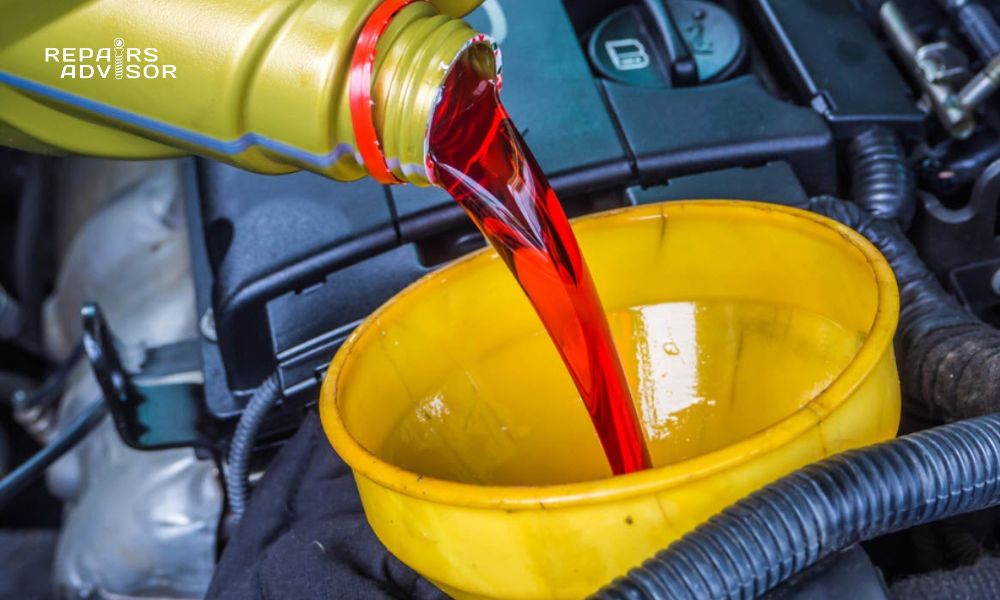The automatic transmission is a crucial component of your vehicle, responsible for efficiently transferring engine power to the wheels by selecting the appropriate gear ratios automatically. This process relies heavily on automatic transmission fluid (ATF), which serves as a lubricant, coolant, and hydraulic medium. Ensuring the health of your ATF is vital for your vehicle’s performance and longevity.
What is Automatic Transmission Fluid?
Automatic transmission fluid is an oil-based fluid designed with specialized additives that provide multiple functions, including:
- Lubricating internal components
- Reducing wear and friction
- Inhibiting rust and corrosion
- Cleaning and protecting metal surfaces
- Maintaining optimal viscosity
- Preventing seal leaks
- Reducing oxidation
- Ensuring proper flow at varying temperatures
- Maintaining fluid thickness under high temperatures
- Ensuring easy pouring in all climates
Different vehicle makes and models require specific types of ATF. Always consult your owner’s manual to determine the correct fluid for your vehicle. ATF is often red but can vary in color, generally distinct from other automotive fluids, which aids in identifying leaks.

How Automatic Transmission Fluid Works
As the transmission operates, the ATF circulates, lubricating parts and dissipating heat. Enclosed within a sealed system, ATF is not exposed to combustion byproducts like engine oil, allowing it to require less frequent changes. However, ATF will eventually degrade, become contaminated, and lose its effectiveness. This deterioration can lead to overheating and other transmission issues.
Regularly checking your owner’s manual for maintenance schedules is recommended. The manual may also include instructions for checking ATF levels, including the location of the dipstick, if equipped. If there is no dipstick or instructions, it is advisable to seek expert advice from a qualified mechanic.
Indicators of Deteriorating Automatic Transmission Fluid
Recognizing signs of failing ATF is critical for preventing severe transmission problems. Some symptoms are specific to vehicles with a dipstick, while others are more general.
Dipstick-Specific Indicators
Low Transmission Fluid Level
Checking the dipstick and finding the fluid level below the “full” mark indicates a need to top up the fluid.
- Action: If the fluid is clean, add fresh ATF, checking the level frequently to avoid overfilling. Be vigilant for potential leaks, which would necessitate professional repair.
Dark or Contaminated Transmission Fluid
While ATF naturally darkens with age, it should not become brown or black, smell burnt, or contain significant particles. Such conditions indicate serious degradation.
- Action: Promptly consult a mechanic. The issue might stem from delayed fluid changes or internal transmission problems. Addressing this early can prevent further damage.
General Indicators
Transmission Fluid Leaks
Visible leaks under the vehicle or hood are a serious issue, regardless of whether your vehicle has a dipstick.
- Action: Immediate professional attention is necessary. If possible, top up the fluid temporarily. Leaks can originate from various sources, including gaskets, seals, lines, or the transmission pan.
Transmission Performance Issues
Degraded ATF can cause transmission problems like difficulty shifting, slipping, or overheating. Unusual noises during operation are also a concern.
- Action: Seek immediate mechanic assessment. These issues might result from inadequate, dirty, or aged ATF or internal mechanical faults. Addressing these swiftly can minimize repair costs.
Maintaining Optimal ATF Health
The longevity and efficiency of your automatic transmission depend on maintaining your ATF. Consistent fluid checks are essential. Adhering to the manufacturer’s recommended change or flush intervals is also critical. This preventative maintenance safeguards your powertrain warranty, which typically covers transmission issues for a specified period. Always refer to your owner’s manual for specific guidelines on ATF changes or flushes.
By taking proactive steps to maintain your automatic transmission fluid, you can ensure the continued smooth operation and extend the lifespan of your vehicle’s transmission.
